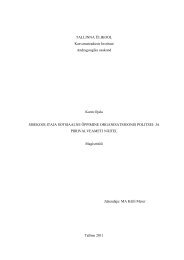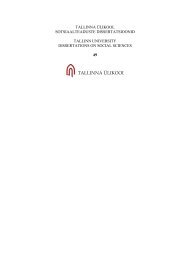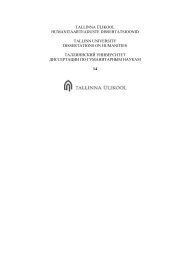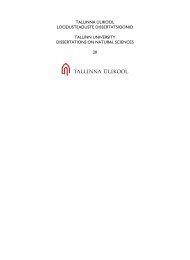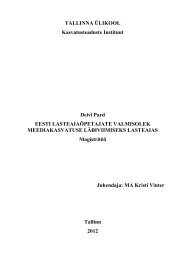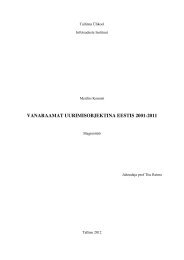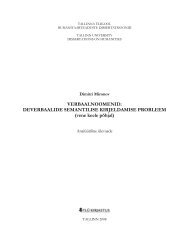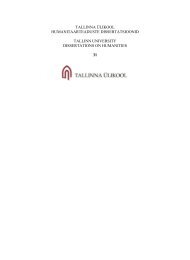You also want an ePaper? Increase the reach of your titles
YUMPU automatically turns print PDFs into web optimized ePapers that Google loves.
sources documenting relevant information about a town; but to lack records of municipalgovernment means inevitably to lack also the chance to have a compact and comprehensivesurvey of the town population and many an aspect of its way of life.One of the goals of the thesis is to demonstrate the research potential of the town registerbooks, primarily the inheritance registers. Their significance for the social topography of atown has been repeatedly underlined and can be substantiated by their character. As we know,the inheritance registers record the real estate transactions in a town giving this way asystematic picture of all the registered immovable and their owners in a town. The registerscontain often detailed descriptions of the immovable that is of effective help in researchingthe architectural history. The town registers highlight also the activities of the towngovernment. Separate attention has to be paid to the importance of the inheritance registersand notebooks as sources of the citizens’ personal data. The town registers can record thename, the occupation, the age, the marital status, the children, the relatives, and the financialstate of the inhabitant. They reflect the fields of occupation of the town population, theirbusiness and trade contacts, even details of the everyday. These data enable to analyze themode of life as well as the population of the town from different aspects. True, the townregisters include inevitably just a fraction of the population. Common people, includingEstonians/non-Germans, are only seldom met in the city management records and incorrespondence. In this regard the sources have their limits but they are the best we have,highlighting a considerably big part of the population during a considerably long time span:the town registers have been kept for decades (or even centuries). Integrating these data withthose coming from other sources creates new knowledge. The versatile information we getfrom town registers about the life and the people in a town enables us spot and analyze theimpact the pivotal social, political, etc. events and/or developments could have.The prerequisite to write the present thesis was the composition of Volume One for TheSources of Pärnu’s History (Pärnu linna ajaloo allikad). These are the records published therethat are the major data for the research. The first volume of The Sources of Pärnu’s Historycontains the town registers of Vana and Uus-Pärnu, the city privileges, the correspondencebetween the Order Commander of Pärnu and the Tallinn town council. The most remarkableof these is the oldest town register of Uus-Pärnu. Initially the parish register of St. NicholasChurch, it was adopted by the Uus-Pärnu town council as its register after the 1524 fire andthe 1525 secularization of the church property. The register encompasses almost the whole ofthe 16 th century: the first entries date back to 1502/1505, and the last ones are from 1588while additional notes have been put down also later. The town register consists of severalindependent parts like the parish register of St. Nicholas’s, the copies of the city privileges,the list of the town council, the memoirs of the burgomaster Johann van Lynthem, and thenotebook and the account book of the town council. The inheritance register begun in 1543 isthe continuation of the corresponding register of St. Nicholas’s parish register. So in principlethere is consistent information about Uus-Pärnu for the entire first half of the 16 th century.Considering the size of the population (1,000–1,200 people) in its European and Livoniancontexts, Uus-Pärnu was a small town. Approximately comparable was the population inViljandi, Volmari and Võnnu. The population size is a clear and uncontroversial indicator butthe figure alone says little about the character of a borough. A more substantial criterion orcharacteristics is the composition of the population, i.e. the ways in which the members of thetown community were distributed according to their social and national category. Thepopulation of Uus-Pärnu was principally no different from that of big cities. The upper andmiddle classes were merchants and craftsmen of German origin. Lower professions, wageworkersand servants were prevailingly non-German. In the first half of the 16 th century thenumber of citizens of noble birth increased in the town including both those who went to live228




